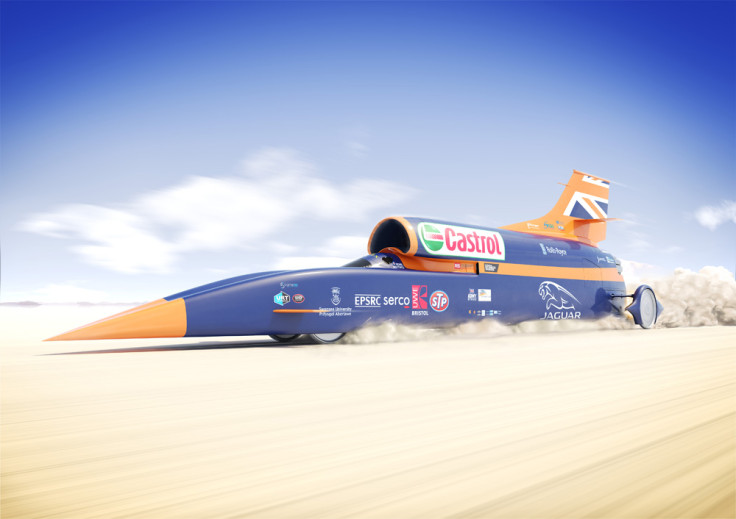Bloodhound SSC: How to stream data and HD video from the 1,000mph rocket car

Travelling at 1,000 miles per hour - covering four-and-a-half football pitches every second - the Bloodhound Supersonic Car will be transmitting HD video and more than 300 data streams across a bespoke 4G network when it attempts to break the land speed world record this year.
Working with networking and video partner Cisco, engineers from the Bristol-based Bloodhound SSC project recently used a fighter jet and high-performance Jaguar roadcar to simulate the demands of transmitting data during the record-breaking runs, which will begin in September.
Making a major step forward in the development of Bloodhound, the team travelled to the Hakskeen Pan in South Africa, where a 12-mile long, two-mile wide area has been specially cleared for the car to run on. Here, they flew an L39 jet in one direction and drove a Jaguar F-Type in the other, both laden with the communication and telemetry kit to be installed in Bloodhound, and achieved a closing speed of 650mph.
Once built, Bloodhound will transmit live data from more than 300 sensors - double that of a Formula One car - and stream three 720p HD video feeds every time it makes a run across the Pan. The data sent from the car is the equivalent of playing 125 MP3 music tracks simultaneously.
Technology partners MTN and Poynting Antennas have created a bespoke 4G LTE network for the project. Data will be transmitted over an 800MHz signal, which is focused to a receiver rather than broadcast widely like a mobile phone signal.
Powered by both the jet engine from a Eurofighter Typhoon and a cluster of hybrid rockets - plus a 550 horsepower Jaguar V8 acting as a fuel pump - Bloodhound will have 135,000 horsepower, the same as 180 Formula One cars.
For the test, data was captured by engineers stood trackside. However, when Bloodhound sets out to beat the current 763mph record in September, it will be beamed to the team's nearby Mission Control Centre, then relayed 80 miles to the nearest town, Upington, before being uploaded to the internet and sent to thousands of schools and colleges participating in the project, plus audiences worldwide.
A data stream from Bloodhound will also carry audio to and from driver Andy Green, who will communicate with his team of engineers and two rapid-response vehicles.
The experiment "confirmed that the project's entire radio infrastructure is now in place, ready for September and the beginning of Bloodhound's high-speed campaign", the team said.
In the summer, Bloodhound will begin runways tests up to 200mph at the Aerohub in Newquay, before heading to South Africa in September with a target of 800mph. If successful, the team will return next year to break the 1,000mph barrier.
© Copyright IBTimes 2025. All rights reserved.






















